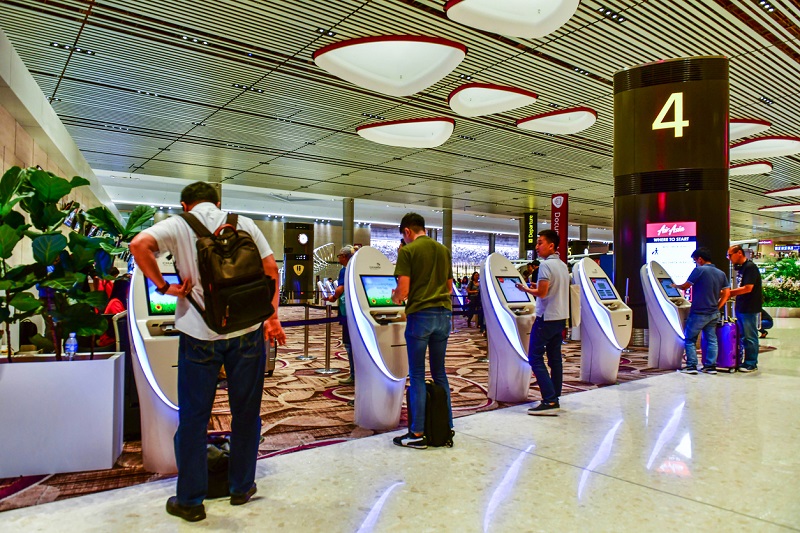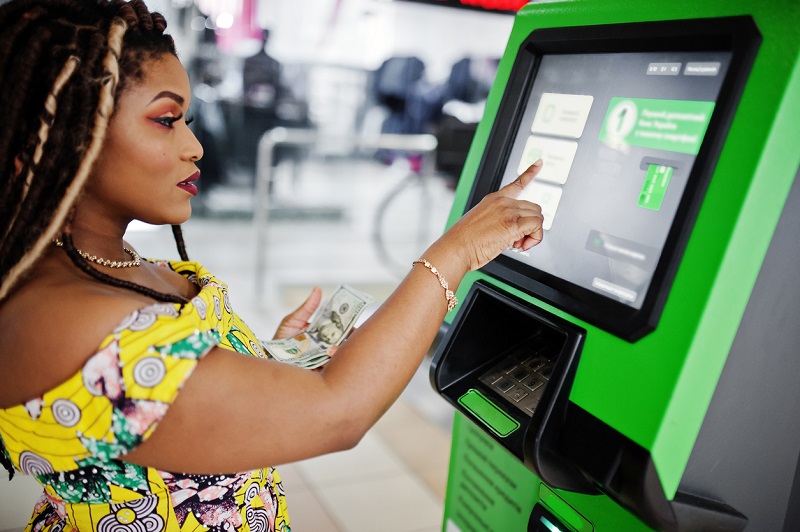Self-service kiosks have been around for quite some time, but only in the past few years have they risen in popularity. From quick-service restaurants to automated services at the bank and airport, self-service functions help to expedite travel, retail purchases and assist with wayfinding. Today, we will be discussing self-service, its pros and cons, and why it is important for the future of most businesses.
What is self-service and how does it work?
Self-service is precisely as its name suggests -- the ability for customers to serve themselves. This is applied primarily to retail stores, restaurants or service stations where customers are allowed to select either a good or service for themselves and purchase it on their own terms. An example of this is ordering a meal at a quick-service restaurant kiosk where customers are able to customize their meal to their liking. The restaurant can then make the food to the exact specifications input into the kiosk, lessening the chance that the customer has to wait in a lengthy line.

What is customer self-service
In a similar vein to other types of self-service, customer self-service uses technology to provide electronic support that allows users to access information such as building layout, wayfinding or travel information, all without the need for a live customer service representative. A real-world example of this would be directory kiosks that provide the layout of a mall or corporate office, or digital library catalogs that allow users to search for whatever information they need without the need to engage an employee.
Why is self-service technology important for businesses?
Self-service is an integral part of many businesses' strategies for two primary reasons -- it creates efficiencies, and it results in a shorter feedback loop between the consumer and the business itself. The first is self-explanatory; with kiosks able to handle many simple tasks, personnel can be distributed to handle more immediate and demanding tasks. The second reason is that with kiosks able to handle financial transactions, customers are then enabled to make purchases based on their own individual wants and needs, which can result in a much more positive experience for the consumer, making it more likely that they will return in the future.
The impact of digital self-service
Many industries are slowly transitioning into digital self-service, allowing customers to decide how they obtain information and make purchases. Below are some examples of how digital self-service is made readily available in a public format.
- Wayfinding: Wayfinding assists individuals by providing an extensive layout of a location either through a digital map or visual guide points, ensuring that people can go to where they need to without fear of being lost.
- Kiosks: Self-service kiosks, like those found in supermarkets or retail stores, assist customers that need to make a quick purchase without requiring them to stand in potentially long lines. Similarly, kiosks are available at transit centers including airports and bus stations, allowing travelers to purchase a ticket without the need of a representative.
- Digital Portals: Digital portals support the presentation of curated information, allowing users to access a range of data on various topics pertinent to their interests.
- Digital Signage: Digital signage allows content, including advertisements, to be shown on a digital display. Besides advertising, digital signage can also display store specials, menus, and other similar information.
How to create engaging digital self-service experiences
To create an engaging digital self-service experience, it is important to give customers the means of interacting with your product or service on their own terms, allowing them as much freedom as possible. While it may be counterintuitive to some, giving your customer base more freedom in choosing their own way of purchasing their own goods and services is almost always a net positive.
Do customers prefer digital self-service?
Many customers prefer digital self-service kiosks as they have the ability to expedite purchases and allow individuals the freedom to handle these transactions at their own pace. However, for many elderly or technologically-challenged individuals, digital self-service may not be the right fit as it can seem too complicated for those not used to the system.

Advantages of self-service
The primary advantage of self-service technology is to allow a customer to engage with products, services, or companies on their own terms. In other words, it allows people to purchase goods and services on their own time without feeling pressured or rushed, resulting in a more positive user experience and greater potential for the customer to return. In the case of information, making it available in a self-service format is often more convenient to consumers as it allows them the freedom to access information in a more expedient manner than finding and consulting with a customer service agent.
Disadvantages of self-service
The primary disadvantage of self-service technology is that there is a lack of human interaction, which isn't ideal in every environment or for every user. The lack of in-person assistance becomes especially problematic when occasional issues pop up, such as price discrepancies, the purchase of age-controlled substances such as alcohol and cigarettes, items failing to scan, or splitting payments between credit or debit cards. For commercial transactions, there will always be a few outliers that will cause snags with self-service processes, and what may be a minor problem for a cashier, can sometimes turn into a larger issue for self-service kiosks.
Digital self-service trends and innovations
- Valuing customers' time: Making self-service kiosk systems as intuitive as possible for the end user is key as it demonstrates that a business values its customers' time and energy.
- 24-hour service: The point of self-service is to be available whenever customers have a need for the provided technology, so it is vital that they are available 24 hours a day whenever possible.
- Influencing future interactions: The point of a self-service platform is to be easy to use, thus prompting future visits.
- Assisting government services: With kiosk improvements that have been developed for use in the retail space, government departments such as the DMV can take advantage of these innovations by integrating more self-service functions in their locations, simplifying many processes for employees and visitors.
- Increased user/customer feedback: No system is perfect, so any feedback -- positive or negative -- helps to ensure a better system for everyone.
- Being more "human": No one likes robotic or unnatural language, so developers of self-service kiosks and platforms are working to make them behave more naturally, as well as be easier to understand for all users.
- More software analytics: Problems will always arise with a new platform, so more available data on potential problem areas helps to create a better platform in the future.
- Being more personal: In a similar vein to being “more human,” developing systems that are more personal is an increasing trend. The hope is to make self-service platforms more tailored to the individual, and therefore better able to assist with purchase ideas or delivering more pertinent information, faster.
Self-service is fast becoming the trend for a reason: it helps to expedite many tasks in our daily lives while also allowing more freedom for consumers. Although developing a digital kiosk program may seem daunting at first, self-service is a trend that almost every industry can and most likely will eventually adopt.


